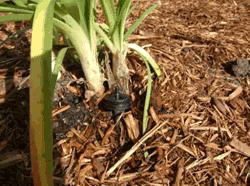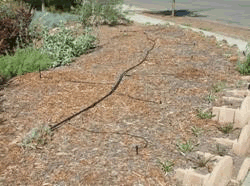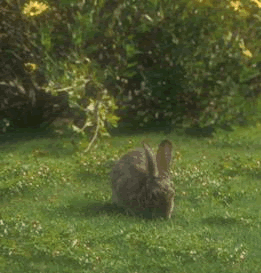|
Drip Systems
| 1. | Drip is generally not recommended for continuously rooting ground covers such as chamomile (see Plant List). |
| 1. | Subsurface drip can be used to irrigate lawn (Note: Be sure to install prior to installing the lawn). |
| 1. | Drip irrigation (also known as micro, low-flow, low-volume, and trickle) can take the form of emitters, miniature sprayers, and sprinklers. |
 
Drip irrigation emitter. Drip irrigation line.
| 1. | Water is delivered just where plants need it. |
| 1. | Water is applied in gallons per hour (gph). |
| 1. | Operate at reduced pressure in order to deliver water at a specified rate, thus requiring a pressure reducer and filters. |
| 1. | Drip systems can be connected to a hose end and be manually operated, or it can be permanently connected to your main water source and be operated by an automatic controller. |
| 1. | Plan enough capacity (emitters) for when your landscape matures. Use the product’s emitter selection chart to determine the flow rate and number of emitters per plant. |
| 1. | Cautions to observe when using drip: |
| · | Polyethylene (“poly”) tubing on the surface in areas of heavy foot traffic or children’s play areas can easily be broken, disconnected, or vandalized. |
| · | Dogs, raccoons, gophers, and other animals can chew tubing and emitters. If this is a problem, use rigid pipe (polyvinyl chloride – PVC) and protection for emitters. |

Rabbits will also chew through irrigation line.
| · | PVC should be buried underground. It becomes brittle when exposed to sunlight. Request the thicker-walled “Class 200” and “Schedule 40” materials for durability. |
| · | Be aware when choosing a pre-packaged drip kit. Be sure the components are of high quality and right for the job. |
| · | Drip irrigation needs to be regularly maintained. |
|
